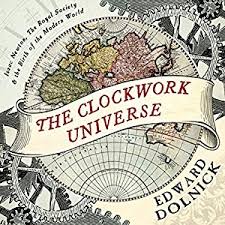
Before going on, we review the opposing theory of reductionism, which states that there is really only one level, namely physical reality, so everything can reduce to it. How has this worked in science?
The reductionist dream is based on logical positivism, the idea that only the physical exists so all science must be expressed in physical terms. Logical positivism is a nineteenth century meta-physical position stating that all science involves only physical observables. In psychology, it led to Behaviorism (Skinner, 1948) which is now largely discredited (Chomsky, 2006). Science is not a way to prove facts, but a way to use world feedback to make best guesses. Yet when Shannon and Weaver defined information as a choice between physical options, the options were physical but the choosing was not (Shannon & Weaver, 1949). A message physically fixed in one way has by this definition zero information because the other ways it could have been fixed do not exist physically. An on/off voltage choice is one bit, but a physical signal alone is no information, hence hieroglyphics that cannot be read have in themselves no information at all.
If reader choices generate information, the data in a physical signal is unknown until it is deciphered. Data compression fits the same data in a physically smaller signal by encoding it more efficiently. It could not do this if information was fully defined by the physical message. The physical level is necessary for the information level but it is not sufficient. Conversely, information does not exist physically, as it cannot be touched or seen.
So if the encoding is unknown, the information is undefined; e.g. an electronic pulse sent down a wire could be a bit, or a byte (an ASCII “1”), or, as the first word of a dictionary, say “aardvark”, be many bytes. The information a message conveys depends on the decoding process; e.g. every 10th letter of this text gives an entirely new (and nonsensical) message.
One response to reductionism is mathematical realism, that mathematical laws are real even if they are not concrete (Penrose, 2005). Mathematics is a science because its constructs are logically correct, not because they are physical. That an equation is later physically useful is not the cause of its reality. Reality is now a consensual construct, with physicality just one option. Likewise in psychology, Skinner’s attempt to reduce all cognitions to physical behavior did not work and has been replaced by cognitive realism, that cognitions are also real.
The acceptance of mathematical and cognitive constructs does not deny science, because science only requires that theory constructs be validated empirically, i.e. by a physical measure, not that they be physical. For example, fear as a cognitive construct can be measured by heart rate, pupil dilation, blood pressure, a questionnaire, etc. Empirical means derived from the physical world, so mental constructs with no physical referent, like love, are not inherently empirical.
Even physics cannot reduce its theories to pure physicality, as quantum theory implies a primordial non-physical quantum level of reality below the physical (Whitworth, 2011). For example, quantum collapse ignores the speed of light limit and quantum waves travel many paths at once. In physics, reductionism gave a clockwork universe where each state perfectly defined the next, as in a computer. Quantum physics flatly denied this, as random quantum events by definition are explained by no physical history. The quantum world cannot be reduced to physical events. Either quantum theory is wrong or reductionism does not work! If all science were physical, all science could be reduced to physics, which it cannot.
A reductionist philosophy that has failed in science in general is hardly a good base for a computing model. If the physical level were sufficient alone, there would be no choices and so no information, i.e. reductionism denies information science. As the great 18th century German philosopher Kant argued long ago, we see an object, or phenomenon, as a view, but don’t see the thing in itself (Kant, 1781/2002). He called the “thing in itself” the noumenon, as opposed to the phenomenon, or view we see. A bat or a bee would see the world differently from us. It is egocentrism to assume the world is only as we see it. Following Kant’s model, the different disciplines of science are just different ways to view the same unspecified reality. Levels return the observer to science, as quantum theory’s paradoxes demand.
Currently, sociology sees individuals as conduits of meaning that reflect external social structures, and so psychological, biological, and physical views are the faulty reductionism of social realities. In this social determinism, society writes social agendas, such as communism or capitalism, upon individual tabulae rasae (blank slates). Yet this just replaces the determinism of fields like biology (Wilson, 1975) and psychology (Skinner, 1948) by another form of determinism.

By contrast, in the general system model of computing shown in Figure 1.5, each level emerges from the previous. So if all individual thoughts were erased, society would also cease to exist as surely as if all its citizens had vanished physically. Sociology assumes psychology, which has led to attempts to re-attach it to its psychological roots, e.g. Bourdieu’s habitus references individual cognitions of the social environment and Gidden’s mental frames underlie social life (Bone, 2005). The top-down return of sociology to its source matches an equally vibrant bottom-up movement in computing, which has long seen itself as more than hardware and software (Boulding, 1956).